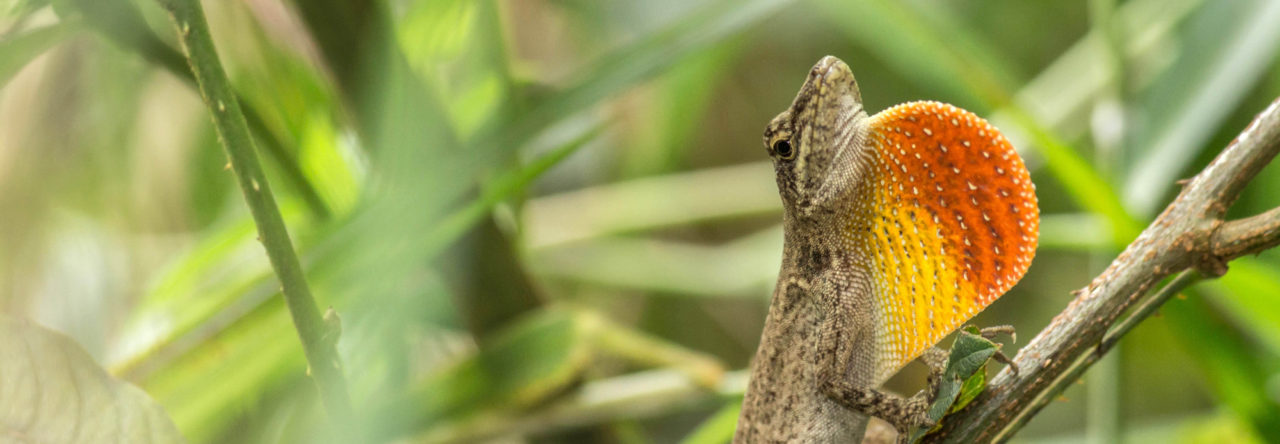
James Christensen, a fabulous nature photographer and keen naturalist, made the following comment on the recent post about how anoles react to bird calls. However, the points are so important that they deserve a post of their own, so I’m reprinting them here:
I have spent many hours photographing wild anoles, especially here in Ecuador, and have learned a great deal about their behaviour while watching them through the viewfinder. When the wind picks up and begins to stir the surrounding foliage I can expect my subject to risk rapid movement – therefore, I probably won’t get a viable shot. Conversely, when toucans or furnarids become active in the vicinity I know that my anole will not venture an abrupt movement, so I squint through the viewfinder and start clicking the shutter. What I have noticed is that the anoles – e.g. Anolis gemmosus and A. proboscis – react not only to the calls of these birds, but also to the sound of their wingbeats. The usual response is a cessation of movement and an increased watchfulness; the anole sits very still and peers upward while discreetly swivelling its head. In the case of a very fit male A. gemmosus with whom I spent many hours – over a period of several weeks – upon the disappearance of avian predators he would begin to dewlap, frequently ‘emphatically’, seeming to reassert his local dominance in the wake of forced inactivity. It became clear to me that the sounds of nearby birds triggered a profound shift in behaviour, and that vision played a secondary role in the perception of avian threats – as every neotropical birder knows, foraging birds are heard more readily than seen.
Concerning the above study, it perhaps bears noting that the American Kestrel is not a highly vocal bird, and that it is likely to remain silent while hunting. I have frequently observed toucans apparently hunting in shrubby forest margins, where no fruit-bearing trees were evident and anoles were plentiful, and at such times the birds were always silent – only their deep wingbeats would betray them to a wary anole.
- Evolution in Real Time on Lizard Island - March 23, 2025
- Spider Snags Adult Anolis osa - March 22, 2025
- An Homage to the Green Anoles of New Orleans - March 21, 2025


Leave a Reply